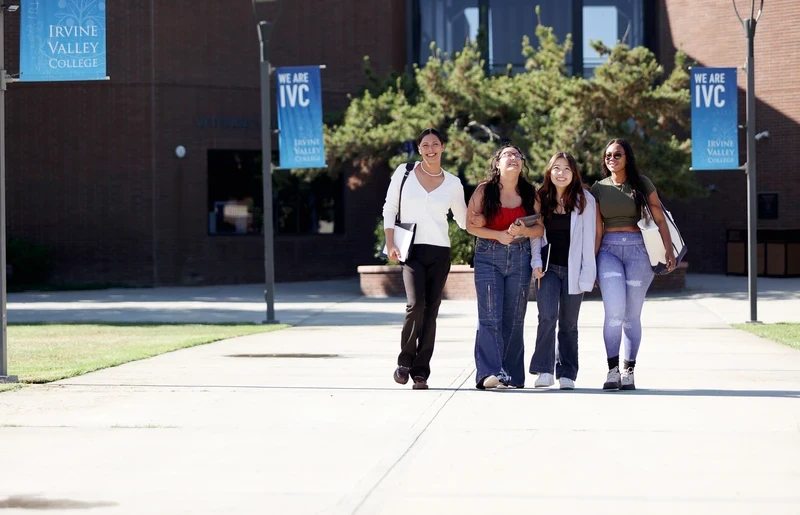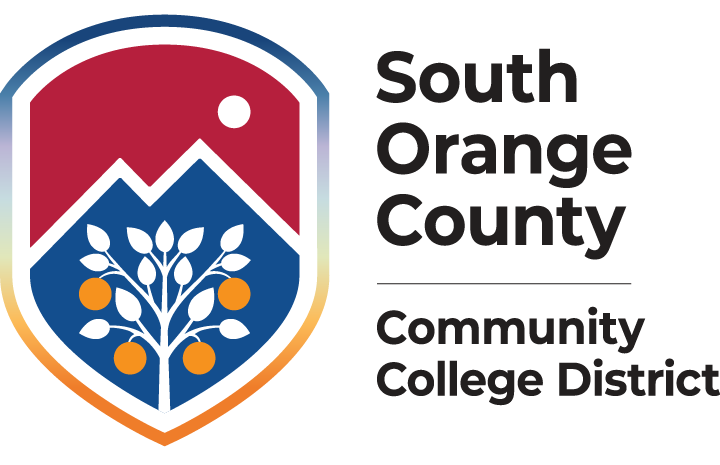
Biden-Harris Administration Convenes Higher Education Leaders to Improve Student Transfer to Increase Completion of College Degrees
New state-by-state data on top two- and four-year institutions supporting student transfer shows importance of sustained cross-institutional partnerships.
As part of its Raise the Bar: Attaining College Excellence and Equity initiative, the U.S. Department of Education is hosting a summit today at Northern Virginia Community College (NOVA) in Annandale, Virginia with 200 higher education leaders on making it easier for students to transfer from one college to another, in turn helping them save time and money. The Department is also releasing groundbreaking new data showing which two- and four-year institutions are best promoting transfer students’ success and highlighting the most productive transfer partnerships between community college and bachelors’ degree institutions in the country.
The difficulty students face in transferring between colleges is one of the most significant obstacles to helping many more students earn college degrees. While nearly 40% of students transfer at some point along their postsecondary journeys, they lose more than 40% of their credits on average when they move between schools. This costs students time, money, and too often the credentials they seek to earn.
As part of the response to the Supreme Court decision in Students for Fair Admissions, the Biden-Harris Administration emphasized in a White House meeting with college presidents and a report on strategies to increase diversity and opportunity in higher education the importance of supporting community college transfer students. Given that many students of color and students with low incomes start their higher learning at community colleges, improving transfer pipelines from two-year to four-year colleges is a key strategy that states and institutions can consider as they commit to missions of greater diversity.
“If we want to Raise the Bar for educational attainment in this country and create more equitable outcomes in higher education, then we need leaders to dramatically level up their support for transfer students,” said U.S. Secretary of Education Miguel Cardona. “Our current higher education system stacks the deck against community college students who aspire to earn four-year degrees—denying acceptance of their credits, forcing them to retake courses, and ultimately making their educational journeys longer and costlier than they need to be. In the wake of a Supreme Court decision that threatens to undermine diversity and equal opportunity in higher education, the Biden-Harris Administration believes that fixing our broken approach to transfer in this country, which disproportionately impacts students of color and other underserved students, has never mattered more.”
The Department also released today groundbreaking new data on transfers that spotlights the top two-year and four-year institutional partnership in each state. Despite the large number of transfer students, there has been little public data on how well particular colleges serve them. Among those top-performing partnerships is NOVA, the host institution for the event, and George Mason University (GMU). Thirteen percent of new federally aided students who enroll at NOVA earn bachelor’s degrees from GMU within eight years, reflecting a high transfer rate between the two institutions and a strong graduation rate after transfer. The Department’s research also found that this partnership is an important factor in the high rate at which Virginia community college students go on to earn bachelor’s degrees, compared to other states. The data also identified other strong partnerships such as Irvine Valley College with California State University-Fullerton (13%), Heartland Community College with Illinois State University (13%), and the Tri-County Technical College with Clemson University (20%).
The summit includes teams of institutional and state representatives from 11 states from across the country: California, Colorado, Illinois, Maryland, Massachusetts, New York, South Carolina, Texas, Virginia, and Washington. At the convening, participants will make commitments to support effective state transfer policy, institutional transfer policy and practice, transfer student advising and navigation, and data- and technology-enabled transfer solutions.
“At today’s summit, the Biden-Harris Administration will not only uplift successful efforts for promoting transfer student success, but also release new data on transfer outcomes across institutions that we hope will help leaders build a more accessible and inclusive higher education system,” said Assistant Secretary of Postsecondary Education Nasser Paydar.
Participants in the summit will also discuss their initiatives and commitments to improving transfer.
Mildred Garcia, Chancellor of the California State University said, “As the first Latina chancellor of the nation’s largest and most diverse four-year university system – half a million students strong – I thank Secretary Cardona for his visionary leadership in advancing educational excellence and equity. These values are the CSU’s values, and we are committed to strengthening transfer pathways to provide increased educational opportunities for the future diverse leaders who will drive California’s social and economic prosperity.”
“While 80% of community college students intend to transfer, fewer than 20% make it to a four-year institution and complete a bachelor’s degree. It’s imperative that higher education works together to help these students who are disproportionately first generation, low-income, working parents, and students of color—complete the transfer process, graduate, and enter the workforce. I am honored to be part of this summit to learn new approaches that support transfer student success,” said Joe Garcia, Chancellor of the Colorado Community College System.
The transfer summit is part of the Department’s Raise the Bar: Attaining College Excellence and Equity initiative. Raise the Bar seeks to uplift colleges committed to inclusivity, equity, and excellence, rather than arbitrary rankings, high costs, and privilege. Raise the Bar encourages state and institutional leaders to ensure students of all backgrounds can earn a college degree or certificate and go on to a better life.
Building on this year’s summits on data-driven improvement and transfer students, next year the Department will convene leaders to address holistic advising and wraparound services and career-relevant learning pathways in order to help more institutions increase completion rates, close completion gaps, and ensure all students are earning completions of value that lead to economic opportunity.
Table 1: Community colleges with highest transfer-out rate for Title IV students, by state
|
State |
Institution name |
Transfer-out rate (8-year) |
Number of students starting in 2-year cohort in 2014 |
Number of 2-year cohort students ever enrolled at a 4-year within 8 years |
|
AL |
Marion Military Institute |
62% |
149 |
93 |
|
AR |
NorthWest Arkansas Community College |
32% |
826 |
263 |
|
AZ |
Chandler-Gilbert Community College |
36% |
855 |
308 |
|
CA |
Irvine Valley College |
53% |
386 |
205 |
|
CO |
Colorado Northwestern Community College |
36% |
86 |
31 |
|
CT |
Norwalk Community College |
32% |
452 |
146 |
|
DE |
Delaware Technical Community College-Terry |
24% |
1450 |
347 |
|
FL |
Tallahassee Community College |
37% |
1610 |
590 |
|
GA |
South Georgia State College |
50% |
560 |
281 |
|
HI |
Kapiolani Community College |
36% |
461 |
168 |
|
IA |
Ellsworth Community College |
46% |
229 |
106 |
|
ID |
College of Southern Idaho |
26% |
617 |
162 |
|
IL |
William Rainey Harper College |
41% |
1048 |
431 |
|
IN |
Vincennes University |
21% |
1527 |
317 |
|
KS |
Barton County Community College |
45% |
219 |
98 |
|
KY |
Hopkinsville Community College |
26% |
348 |
92 |
|
LA |
Louisiana State University-Eunice |
35% |
417 |
148 |
|
MA |
Massachusetts Bay Community College |
39% |
451 |
176 |
|
MD |
Montgomery College |
43% |
1856 |
805 |
|
ME |
Kennebec Valley Community College |
27% |
191 |
52 |
|
MI |
Muskegon Community College |
34% |
556 |
188 |
|
MN |
Normandale Community College |
36% |
846 |
304 |
|
MO |
St Charles Community College |
33% |
637 |
210 |
|
MS |
Mississippi Delta Community College |
43% |
478 |
206 |
|
MT |
Dawson Community College |
52% |
65 |
34 |
|
NC |
Coastal Carolina Community College |
31% |
309 |
95 |
|
ND |
Dakota College at Bottineau |
41% |
106 |
43 |
|
NE |
Mid-Plains Community College |
29% |
275 |
80 |
|
NH |
NHTI-Concord's Community College |
31% |
720 |
226 |
|
NJ |
County College of Morris |
48% |
717 |
345 |
|
NM |
New Mexico Military Institute |
71% |
103 |
73 |
|
NV |
Western Nevada College |
27% |
221 |
59 |
|
NY |
Stella and Charles Guttman Community College |
55% |
173 |
95 |
|
OH |
Columbus State Community College |
31% |
2025 |
632 |
|
OK |
Northeastern Oklahoma A&M College |
39% |
444 |
173 |
|
OR |
Clackamas Community College |
29% |
475 |
136 |
|
PA |
Bucks County Community College |
44% |
700 |
311 |
|
RI |
Community College of Rhode Island |
25% |
2172 |
544 |
|
SC |
University of South Carolina-Sumter |
61% |
127 |
78 |
|
SD |
Western Dakota Technical Institute |
19% |
182 |
35 |
|
TN |
Motlow State Community College |
32% |
569 |
184 |
|
TX |
The University of Texas at Brownsville |
49% |
1293 |
628 |
|
UT |
Snow College |
43% |
602 |
259 |
|
VA |
Richard Bland College of the College of William and Mary |
47% |
245 |
116 |
|
VT |
Community College of Vermont |
23% |
491 |
115 |
|
WA |
Bellevue College |
42% |
375 |
159 |
|
WI |
University of Wisconsin Colleges |
45% |
1740 |
780 |
|
WV |
Southern West Virginia Community and Technical College |
26% |
338 |
87 |
|
WY |
Northwest College |
31% |
179 |
55 |
